Not a moment too soon, optimizing the patient experience has become a top priority for many healthcare providers across the nation. As medical practices focus on providing patients with the proper level of support, the providers improve outcomes across the board.
However, you cannot optimize the patient experience if you do not have a handle on your staffing challenges. Optimizing your workforce is key in dialing in the patient experience to optimal levels and keeping it there at all times. Here’s what you need to know about why patient experience matters and what you can do about it.
Facility Operations
When you do not have adequate staff levels to handle all your patient and clinic needs, your facility operations start to suffer. Your current physicians and other staff members have to juggle increased workloads and sometimes even have to complete work outside their job descriptions.
Without resolving the problem right away, stress often mounts, resulting in the disengagement of your workforce and high staff turnover levels. All of this comes together to have a negative impact on the patient experience, so it is important to resolve such potential issues with a workforce optimization strategy.
Patient Experience
Without the proper management of your workforce, patient satisfaction levels quickly decline. Your patients need the proper level of support to feel at ease in your healthcare facility. They also look toward your staff for quality care that provides true peace of mind at all times.
When your staff cannot adequately meet those needs, the patient experience takes a dive. Next, the facility’s reputation and long-term profitability suffer as well. And without patients singing your praises, you also stand to lose the continuation of revenue streams. Your patients may look for a new clinic and stop sending referrals your way. Thankfully, a workforce optimization strategy can mitigate these issues and help optimize the patient experience.
Tips to Help You Optimize Your Staffing Levels
By creating and following a workforce optimization strategy, you can keep the right number of staff members on schedule at all times. As a result, your patients will receive a higher quality of care, providing them with an ideal patient experience at all their visits. Use these tips to get started.
Gather Past Data for Review
Your first step in optimizing your staffing levels is identifying the actual needs of your clinic. You can easily find that information by looking at past data, including patient volumes and payroll.
Create a Workforce Forecast
With your past data in hand, you can create a helpful workforce forecast that shows your optimal staffing levels. You can then determine what your facility’s core staffing needs look like on any given date.
Regularly Bring in Extra Support
If your data reveals times when you need additional staff, do not hesitate to bring in contingency staff to help as needed. The extra support will go a long way in maximizing the productivity of your workforce and the satisfaction of your patients.
Through these steps, you can ensure you always have the staff on hand to best serve the needs of your patients and your community.
Optimizing the Patient Experience with Adequate Staffing Levels
With an understanding of the importance of the patient experience in healthcare, you can move forward purposefully and effectively optimizing your staffing levels. Your physicians, facility, and patients will all greatly benefit from your efforts. So, make optimizing these areas your top priority today. You can get started by learning more about VISTA and how we can help you build your workforce optimization strategy.


